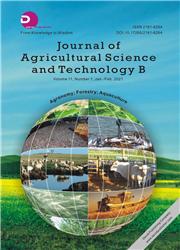Utilization of Mill Effluent for Growth, Availability and Uptake of Nutrients by Palm Oil Seedlings
引用次数: 0
Abstract
A large amount of palm oil mill effluent is one of the issues faced by palm oil producers in Indonesia. To alleviate the environmental pollution, it is necessary to reduce the problem by using it as a liquid organic fertilizer. A pot experiment to determine the effects of mill effluent on growth of palm oil seedlings (Elaeis guineensis Jacq.), availability and uptake of macronutrients was conducted in Tandun Plantation Unit, province of Riau, Indonesia. The experiment used a randomized block design, consisting nine combinations of mill effluent doses (3.2, 6.4 and 9.6 L) and recommended fertilizer doses (100%, 75%, 50% NPKMg) in 20 kg soil and one control. The experiment was replicated three times. The results showed that plant height, stem diameter and number of fronds of palm oil seedlings at 26 weeks after planting (WAP) were significantly affected by application of 9.6 L mill effluent with 50%-75% NPKMg. The enhancement of soil organic C (Corg) content, soil pH and cation exchange capacity due to the application of 9.6 L mill effluent combined with 50% NPKMg caused the availability of soil P and total N (Ntot) increased significantly, while exchangeable K was affected by application of 6.4 L mill effluent combined with 100% NPKMg. All treatments did not affect soil exchangeable Mg. A positive correlation between availability of soil N, P, K and its uptake by palm oil seedlings at 26 WAP were indicated by r = 0.61, 0.63 and 0.57, respectively.磨厂废水对棕榈油幼苗生长、养分有效性和吸收的利用
大量棕榈油厂废水是印尼棕榈油生产商面临的问题之一。为了减轻环境污染,有必要将其用作液体有机肥料来减少这个问题。在印度尼西亚廖内省Tandun种植园进行了一项盆栽试验,以确定工厂废水对棕榈油幼苗(Elaeis guinensis Jacq.)生长、大量营养物质的可用性和吸收的影响。该实验采用了随机区组设计,包括在20 kg土壤和一个对照中的九种工厂废水剂量(3.2、6.4和9.6 L)和推荐肥料剂量(100%、75%、50%NPKMg)的组合。这个实验重复了三次。结果表明,施用含50%-75%NPKMg的9.6L工厂废水对种植后26周棕榈油幼苗的株高、茎径和叶片数有显著影响。9.6L选矿废水与50%NPKMg联合施用提高了土壤有机碳(Corg)含量、土壤pH值和阳离子交换能力,使土壤P和总N(Ntot)的有效性显著提高,而6.4L选矿废水和100%NPKMg的施用影响了交换性K。所有处理均不影响土壤交换性镁。26 WAP时,土壤N、P、K的有效性与棕榈油幼苗对其吸收呈正相关,分别为r=0.61、0.63和0.57。
本文章由计算机程序翻译,如有差异,请以英文原文为准。
求助全文
约1分钟内获得全文
求助全文

 求助内容:
求助内容: 应助结果提醒方式:
应助结果提醒方式:


